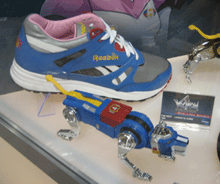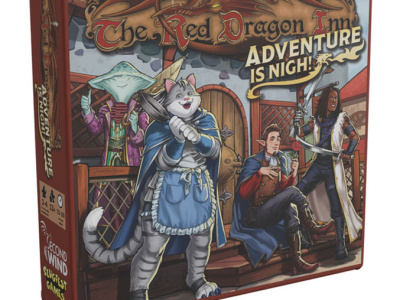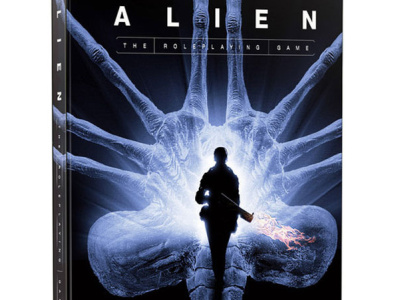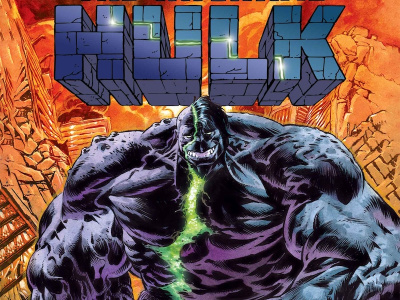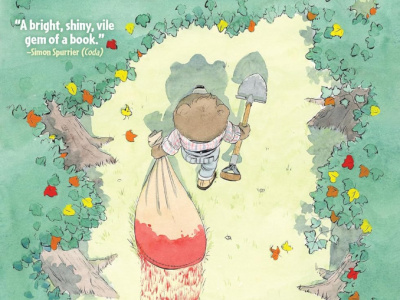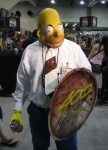
We continue our coverage of San Diego Comic-Con with a few shorter bits. In addition to some of the clever brand-building campaigns we've already covered (see 'Records Shattered at San Diego' for some of the larger trends and 'Art and Marketing' for some more unconventional campaigns), we should also note the presence of costumed characters roaming the show, at times (perhaps intentionally) mistaken for amateur cosplayers.
A Web-based campaign at the Tokyopop booth utilized photographers roaming the aisles taking shots of attendees who could then log in at kiosks at the Tokyopop booth to view their pictures. By Friday morning over 4000 people had registered as part of the promotion, with 20 to 30 people in line to sign up at mid-morning.
Sometimes marketing campaigns took on a life of their own, as in the alteration or second uses of show giveaways. We saw this costumed Homer (pictured above) who'd altered his 300 shield, given away to promote DVD sales, to celebrate instead the 400 episodes of the Simpsons TV show.
And by the last day of the show, the over-size Smallville bags had been converted to clothing by at least one attendee. Of course, veteran con-goers were unsurprised by this outcome; on Wednesday night, we heard the prediction, and on Sunday saw the reality of the Smallville Bagdress.
Webcomics were scattered throughout the floor rather than grouped as they were last year. We were impressed with the energy at the Dumbrella booth, a group of Webcomics creators exhibiting together. Six of the creators in the group have been able to make the transition to being supported by their work, with 80-90% of revenues coming from sales of products. The books and other products are sold through their Websites and also through retailers.
Where there's a culture, there has to be fashion, and geek chic hit the show this year in the form of limited edition Voltron shoes from Reebok, exhibited at the Toynami booth. There are four shoe designs in editions of 3000, each associated with an exclusive plastic Voltron lion figure from Toynami. They will retail (when they can be found) for $60 to $90 until they hit eBay.
Marvel was on the floor in a bigger way, now supported by its studio division's presence rather than by a videogame licensee as has been the case in recent years.
We liked seeing the fact that SDCC found space for a cluster of pin-up artists on the south end of the hall, and that there were customers for such a narrow interest group. This was just one of many small niches that were represented, and often artfully grouped, on the floor of the show.
There is some tension between the old-timers who remember the show's roots as a place primarily to buy back issue comics and the
On Thursday during a particularly busy period on the exhibit floor, there were hordes of people mobbing the movie, TV, and videogame booths. In the midst of this frenzy, there was a young girl of perhaps 12 curled up on the carpeted floor, leaning against the back wall of one of the massive studio booths, reading an Archie digest. To her, the most interesting thing in the exhibit hall at that time, despite the efforts of hundreds of exhibitors to attract her attention, was the story she was reading. A comic culture in which a mega-presentation by a major studio and a girl reading a comic about teenager hi-jinx can co-exist and both thrive is a good sign for the future of both.




